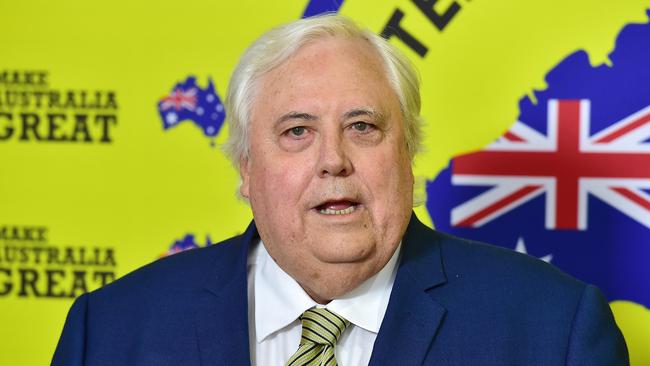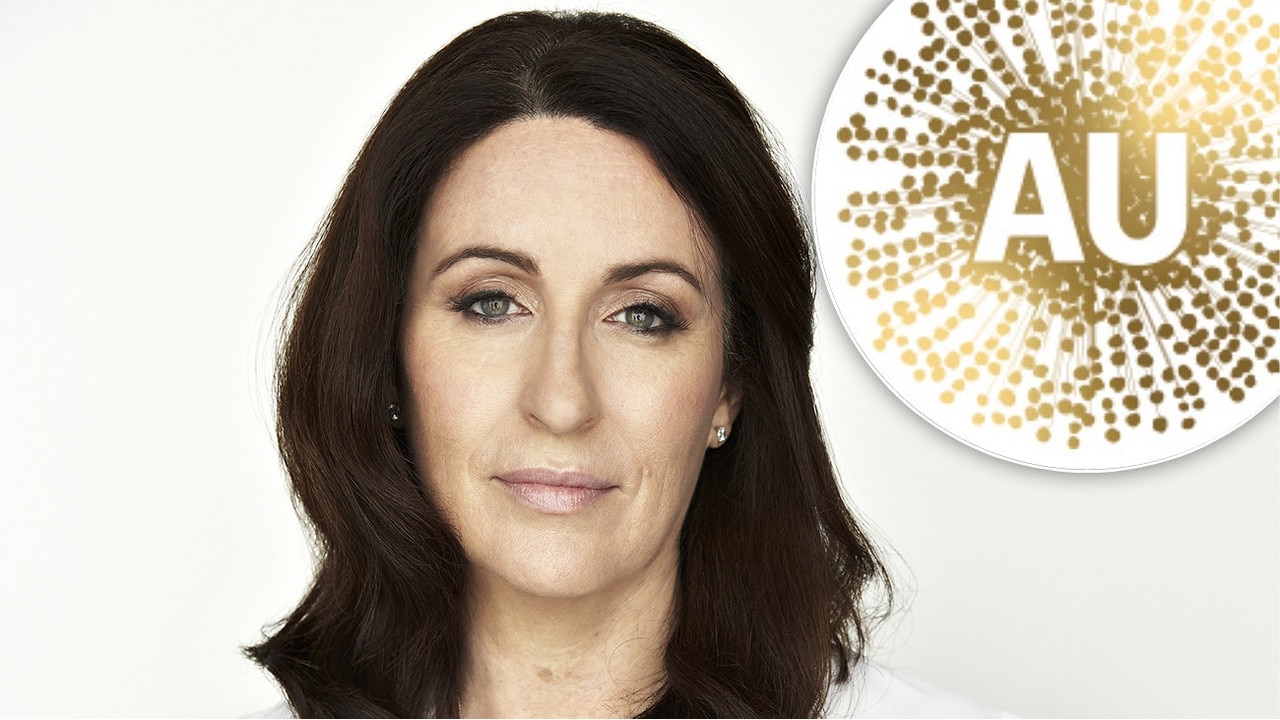Can Clive’s money really buy him an election win?
Clive Palmer, written off by many after 2016, has purchased a return ticket into our lives through saturation advertising across the country, especially in regional areas. It’s time we start paying attention, writes Dennis Atkins.
Rendezview
Don't miss out on the headlines from Rendezview. Followed categories will be added to My News.
In Australian politics the political class — most of the elected, their staffers and the media with its collective nose up against the glass — gets the news last.
This class is domiciled almost exclusively around postcode 2600, which includes Parliament House, and in those postcodes that run between 2000 and 2125 in Sydney, and between 3000 and 3184 in Melbourne.
This is quintessential metropolitan Australia. Many of those who live in there speak a different language and spend a lot of time talking to and about themselves. This is why many of them were surprised at the results of four Newspoll surveys in marginal federal seats showing Clive Palmer’s United Australia Party doing very well indeed.
RELATED: Clive Palmer to sway four marginal seats
Others, such as people this column speaks with regularly, noticed Palmer’s muscular return as a political force in the last quarter of 2018. You’d be blinkered to miss it.
Palmer has been shamelessly buying his way back into the favour of voters for more than six months, spending a bit and then more and more.
His ad buy this year has been extraordinary, hitting more than $3 million a week since the Budget three weeks ago. Now, he’s looking to either parlay his way into the election outcome or win the last Senate seat in at least Queensland.

The Newspoll result in Herbert, centred on Townsville and the most marginal seat in the country, tells us much about what’s happening in Queensland.
Outside metropolitan Brisbane, the vote for parties other than the LNP or Labor is between 25 and 35 per cent.
This means we will see, as Newspoll says is happening in Herbert, the total vote fracture three ways. Here, two things will become very important.
First, which of the major parties — Labor or the LNP — finishes first on primary votes.
Second, how the other parties line up in terms of primary support and how their respective preferences flow to where.
RELATED: Clive Palmer – The bizarre $50 million federal election campaign
If you thought you’d get through May 18 with just half a dozen pizzas and a case of your favourite beverage, think again. It will be a long night and we will probably not go to bed knowing the results in these seats: Leichhardt, Herbert, Dawson, Flynn, Capricornia or Wide Bay.
Seats that should be known but could be drawn into this minor party cluster whoopsie are Hinkler, Longman, Forde, Wright, maybe Rankin and perhaps a seat or three on the Sunshine or Gold coasts.

Palmer, written off by many after he left politics in a puff of hypocritical and vacuous smoke in 2016, has purchased a return ticket into national affairs through saturation advertising across the country with special attention to regional media markets.
Palmer’s message is simple and Trumpian. The ads condemn both major parties saying they’ve nothing for the people, engaged in cynical self-interest and sold out our heritage and present treasure to foreign interests.
There’s an array of spots from the quick and dirty of the “drain the swamp” variety Donald Trump used in the US in 2016.
RELATED: Anna Palmer to give evidence into collapse of Queensland Nickel
Palmer even mimics Trump’s signature slogan with big yellow billboards proclaiming “Make Australia Great”.
There are also some very wordy policy ads that give the appearance of offering solutions to Australia’s myriad challenges. Most of these plans do not stand up to much scrutiny.
There are also some wild conspiracy theories that centre on a claim that Australian governments — mainly Labor but the Coalition looks complicit in this mad thesis — have deliberately provided the infrastructure to open the country to a military invasion by the Chinese.

This is not just completely implausible but adds some comedy gold to Palmer’s quixotic — and probably at least partially successful — return to politics.
The money Palmer is spending — expected to be close to $60 million when the finishing line appears — will mostly be sourced from China.
Palmer has been in a long running legal battle with CITIC, a state Chinese enterprise that owns Sino Iron, over royalties the Queensland businessman says were owed to his company Mineralogy.
RELATED: Frydenberg comments on Clive Palmer’s political re-entry
After CITIC gave as good as it was getting in legal round after legal round, the state-owned corporation threw in the towel, quite surprisingly, and paid Palmer $US164 million (about $A230 million).
That’s a lot of money in anyone’s language and was a shock turnaround by the Chinese. It certainly came at an opportune time for Palmer as he started spending big on advertising.
Long time China watchers suggest the decision for CITIC to switch legal strategy would have been made not in the Chaoyang District of Beijing but in the Zhongnanhai building in the Imperial City. Zhongnanhai houses the offices of the Communist Party of China.
Dennis Atkins is The Courier-Mail’s national affairs editor.
dennis.atkins@news.com.au
Originally published as Can Clive’s money really buy him an election win?


